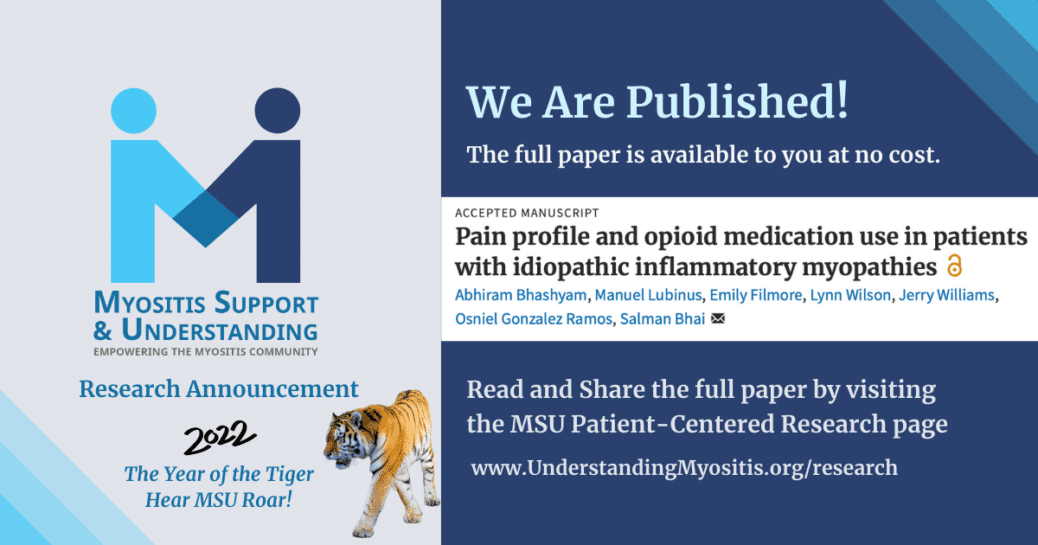We are excited to announce our first publication!
The MSU pain article: “Pain profile and opioid medication use in patients with idiopathic inflammatory myopathies” has been published in Rheumatology and MSU is proud to make the paper available to you at no cost.
Join us in celebrating our first publication by watching the recording of our Fireside Chat on Zoom about the MSU Pain Study that was held on May 31st. Learn how a community call to action led to this seminal paper on pain and myositis. Bring the paper and your questions and we discuss strategies to have conversations with your doctor about your pain and pain treatments that might be effective for you. We will also talk about where we go from here and future studies to understand the pain in myositis and treatment effectiveness.
It may have taken three years to get to this point, but we won’t rest until the pain in myositis becomes better recognized and treated and is listed as one of the top symptoms on surveys and resource sites, not something for the “other” box.
Our thanks go out to the myositis community. YOU made this happen!











Hi Amy and thank you so much for your kind words about MSU. We appreciate your continued support and hope you will continue to spread the word.
Our pain research was based on my experience with myositis pain and the tremendous suffering I experienced but shouldn’t have had to. I finally found palliative care and I now have stable pain control. I am so glad that Emily Filmore was my support and co-founder of the study that led to the publication. It’s really an amazing story of how it all came to be including Lynn Wilson, Manuel Lubinus, Dr. Salman Bhai, and others. Thanks for the recognition! Big hugs!
MSU is a tremendous organization. The support it offers is outstanding.
As well, the research and publication on pain in myositis is outstanding in and of itself. And that a community based support organization would do it so well, using standard scientific approach, such that it could be published in a prominent medical journal- outstanding!
Amy Portmore, MD
Physician and Myositis Patient